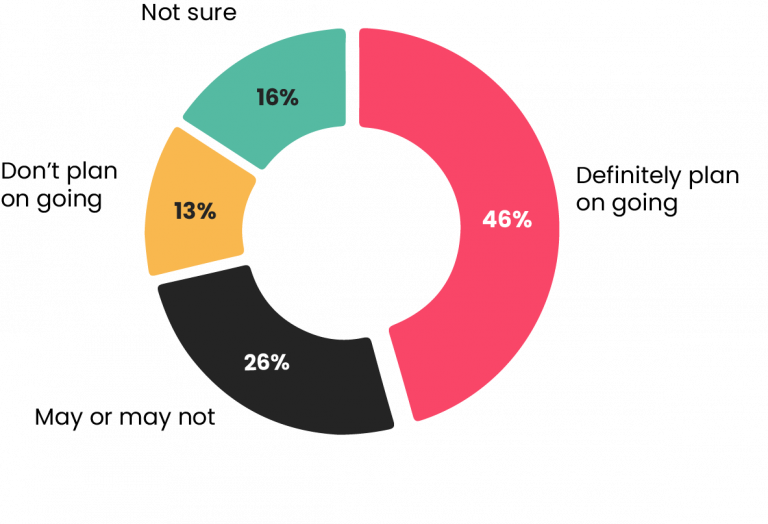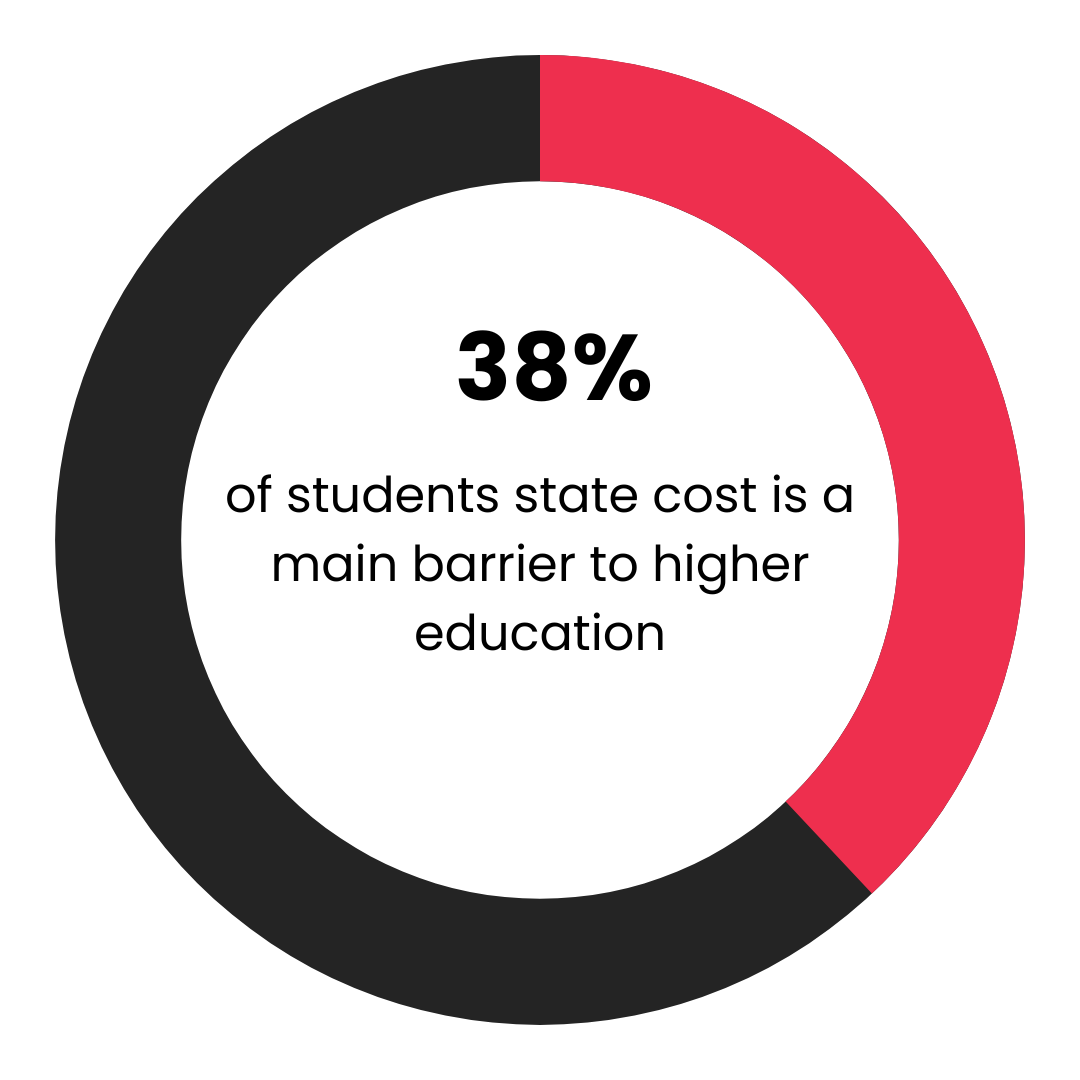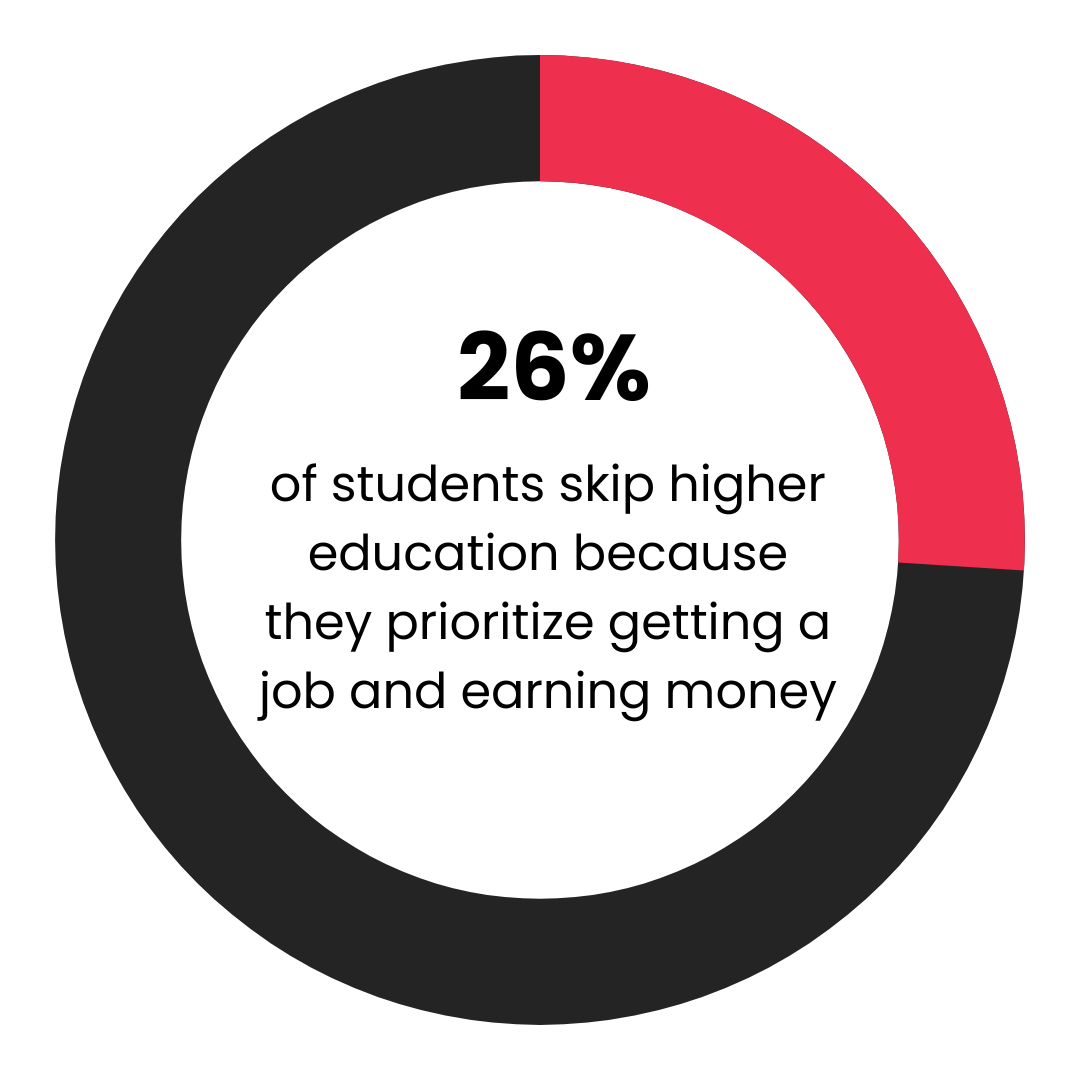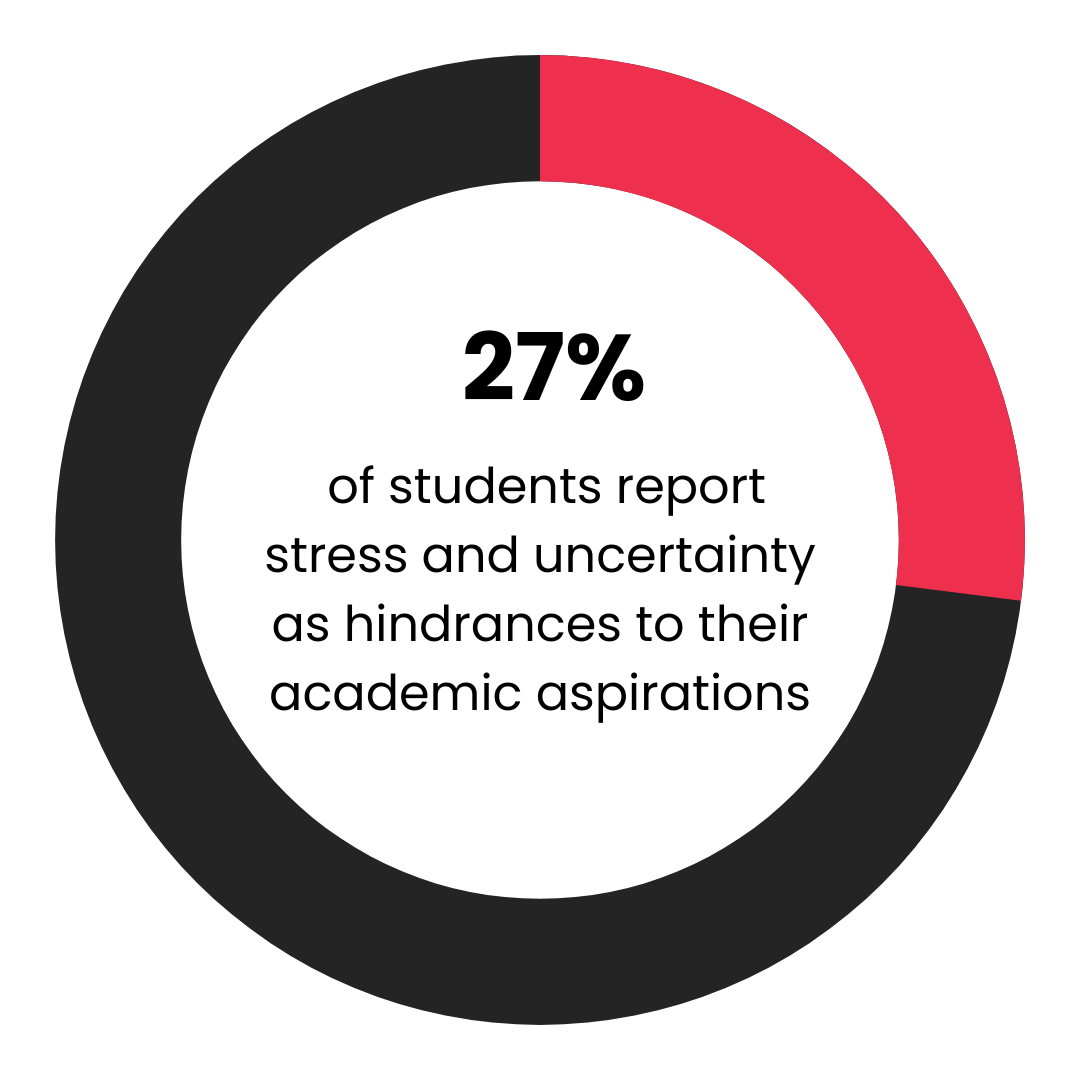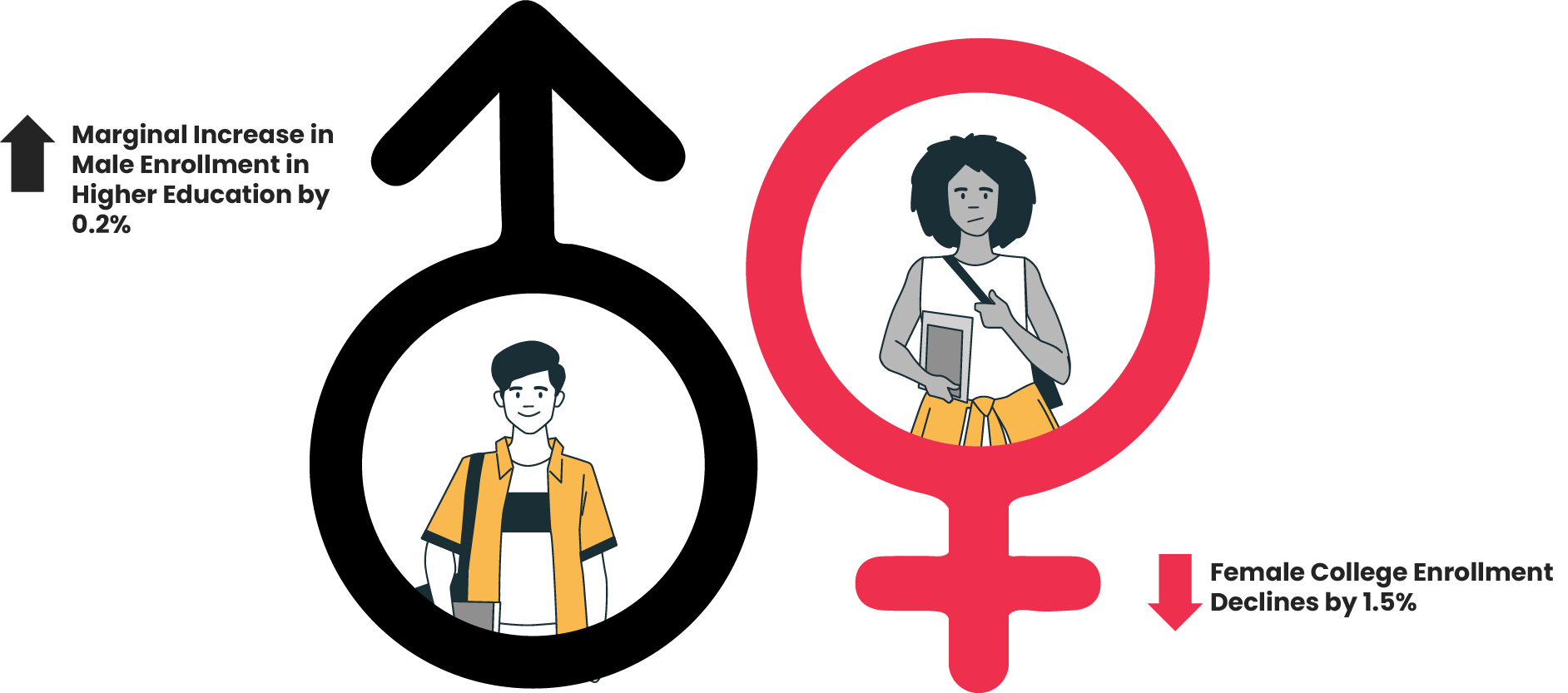Key Takeaways
- Total fall enrollment reached 18.2M; undergraduate enrollment makes up for 15.1M, and graduate enrollment takes the remaining 3.1M.
- Declines in fall undergraduate enrollment began to stabilize in 2022, slipping by just 0.6 %.
- 44% of respondents believe that a degree will increase their earning potential.
- Nearly 38% of respondents cited the prohibitive expenses associated with attending college as their primary reason for not pursuing post-secondary education.
- In 2022, the business program experienced a significant increase in enrollment, with a growth of 1.2%.
- The enrollment of Latinx and Asian undergraduate students has increased by 1.6% and 1.8%, respectively.
- The declining female college enrollment trend has persisted, with a reduction of 1.5% or a total of 122,000 students.


